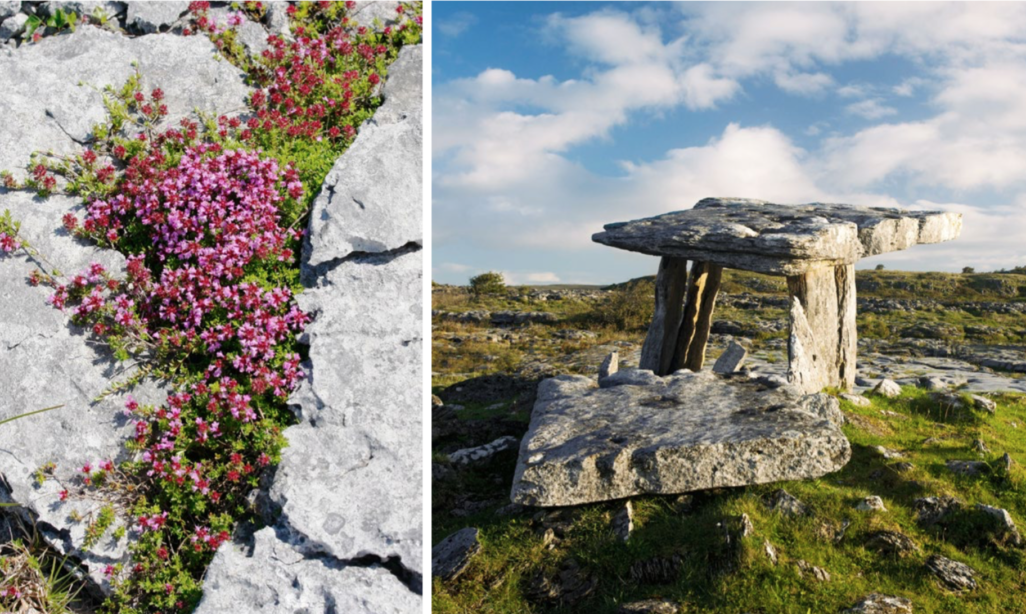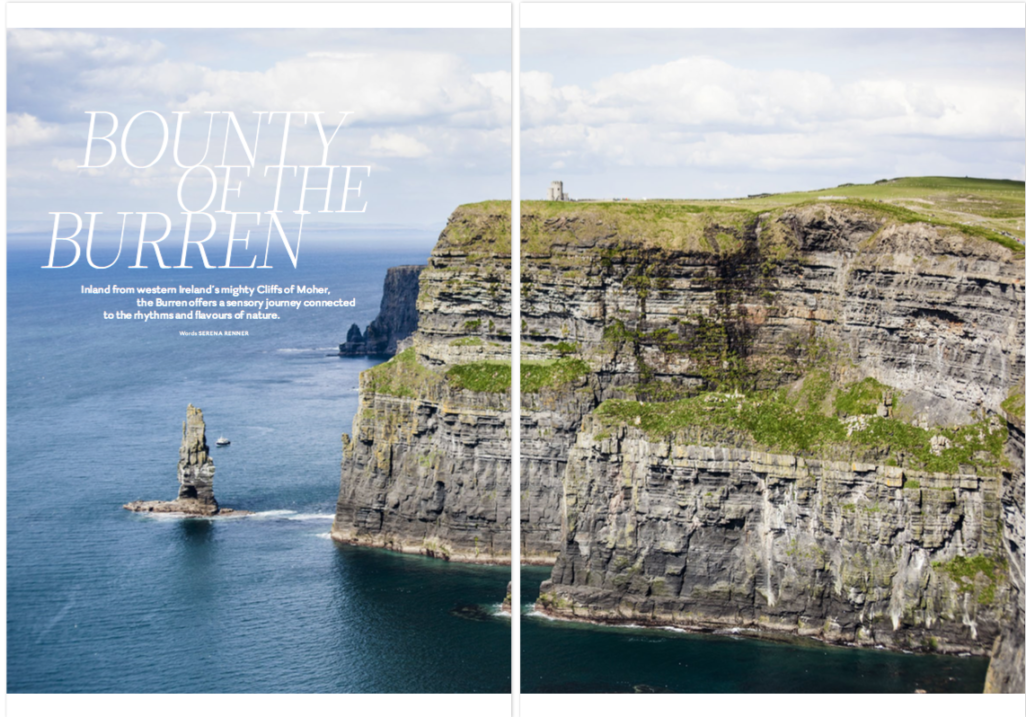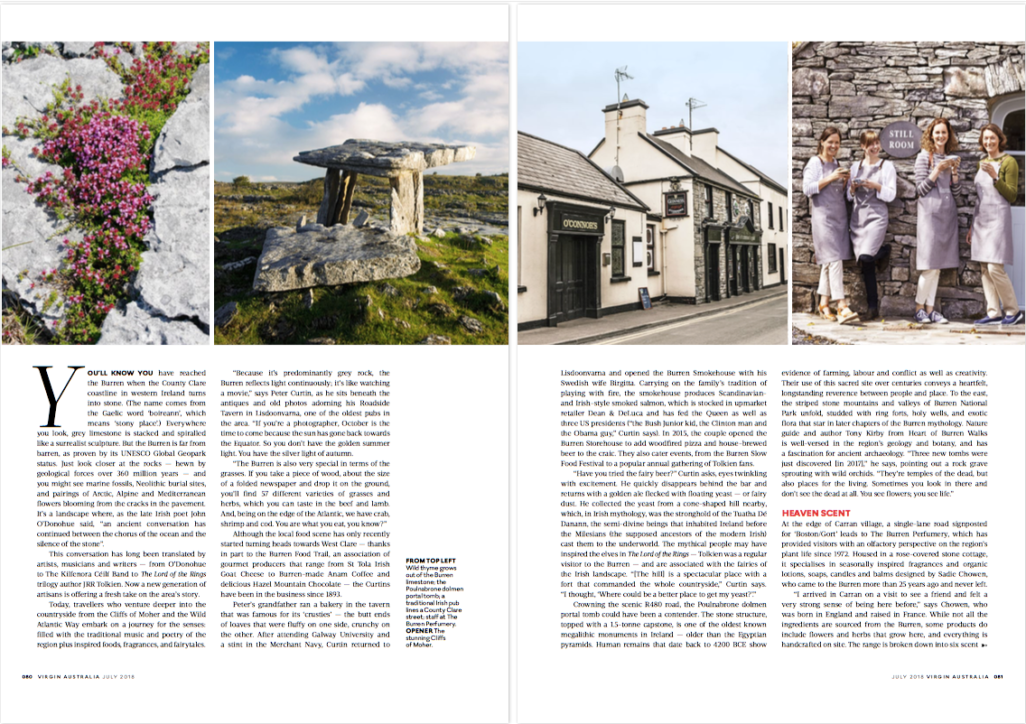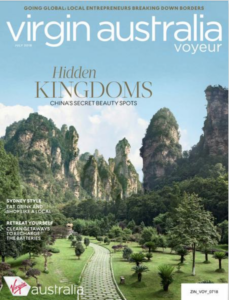
Wild thyme grows out of Burren limestone; the Poulnabrone dolmen portal tomb. Photos by Alamy and Getty Images.
Inland from western Ireland’s mighty Cliffs of Moher, the Burren offers a sensory journey connected to the rhythms and flavours of nature.
You’ll know you’ve reached the Burren when the County Clare coastline in western Ireland turns into stone. (The name comes from the Gaelic word ‘boireann’, which means ‘stony place’.) Everywhere you look, grey limestone is stacked and spiralled like a surrealist sculpture. But the Burren is far from barren, as proven by its UNESCO Global Geopark status. Just look closer at the rocks — hewn by geological forces over 360 million years — and you might see marine fossils, Neolithic burial sites, and pairings of Arctic, Alpine and Mediterranean flowers blooming from the cracks in the pavement. It’s a landscape where, as the late Irish poet John O’Donohue said, “an ancient conversation has continued between the chorus of the ocean and the silence of the stone”.

 (Published in the July 2018 issue of Virgin’s Voyeur. View the PDF here.)
(Published in the July 2018 issue of Virgin’s Voyeur. View the PDF here.)
